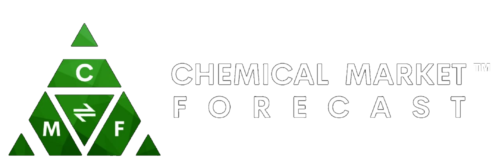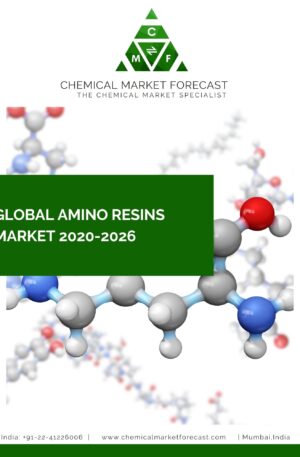Global Ceramic Binders Market Report
Ceramic binders are inorganic materials used to bind ceramic particles together during the production of ceramic materials such as tiles, bricks, refractory materials, and advanced ceramics. These binders play a crucial role in determining the mechanical properties, durability, and performance of the final ceramic product. The global ceramic binders market has been growing steadily over the past few years, driven by the increasing demand for advanced ceramics in various industries, including electronics, aerospace, and healthcare.
One of the major factors driving the growth of the market is the increasing demand for advanced ceramics in the electronics industry. Ceramic materials are widely used in electronic devices due to their excellent electrical, thermal, and mechanical properties. Ceramic binders are used to bind the ceramic particles together during the production of these materials, making them an essential component in the manufacturing process.
Another factor driving the growth of the ceramic binders market is the increasing demand for refractory materials in the construction industry. Refractory materials are used to line high-temperature furnaces and other equipment used in the production of steel, cement, and other materials. Ceramic binders are used to bind the refractory materials together, providing the necessary strength and durability for these applications.
The use of ceramic binders dates back to ancient times when people used natural materials such as clay to bind ceramic particles together to create pottery and other objects. In ancient China, for example, potters used a mixture of clay and water as a binder to create ceramic objects. Over time, advances in technology led to the development of more advanced ceramic binders. In the early 20th century, researchers began experimenting with inorganic binders such as sodium silicate and potassium silicate. These binders were used to create refractory materials used in high-temperature applications such as steel production. Today, ceramic binders are used in a wide range of applications, from the production of traditional ceramics such as pottery and tiles to advanced ceramic materials used in aerospace, healthcare, and electronics. Advances in technology continue to drive the development of new and innovative ceramic binders, offering new opportunities for manufacturers and researchers alike.
The ceramic binders market is segmented by type, application, and region. Based on type, the market is segmented into inorganic binders and organic binders. Inorganic binders are the most widely used, accounting for over 70% of the market share. Based on application, the market is segmented into tiles, bricks, refractories, advanced ceramics, and others. Advanced ceramics are the largest segment, accounting for over 35% of the market share.
Geographically, the ceramic binders market is segmented into North America, Europe, Asia Pacific, Latin America, and Middle East & Africa. Asia Pacific is the largest market for ceramic binders, accounting for over 40% of the market share. This can be attributed to the growing demand for advanced ceramics in the electronics and healthcare industries in the region, particularly in countries such as China, Japan, and South Korea. North America and Europe are also significant markets for ceramic binders, driven by the increasing demand for refractory materials in the construction industry.
The ceramic binders market is highly competitive, with several players operating in the market. Some of the key players in the market include Saint-Gobain S.A., H.C. Starck GmbH, The Dow Chemical Company, BASF SE, and 3M Company. These players are focused on developing new products, expanding their presence in emerging markets, and acquiring smaller players to stay competitive.
Table of Contents
Global Ceramic Binders Market Report
1 Market Introduction of Ceramic Binders Market Report
2 Market Segmentation of Ceramic Binders Market Report
2.1 Ceramic Binders Market Segmentation By Region
2.2 Ceramic Binders Market Segmentation By Type
2.3 Ceramic Binders Market Segmentation By Crop Type
3 Cost Structure of Ceramic Binders Market Report
4 Country Analysis of Ceramic Binders Market Report
4.1 China
4.1.1 Ceramic Binders Market Forecast & Size in China
4.1.2 Ceramic Binders Market Trends & Analysis in China
4.1.3 Key Ceramic Binders companies in China
4.1.4 Regulatory Framework of Ceramic Binders Market in China
4.2 Germany
4.2.1 Ceramic Binders Market Size in Germany
4.2.2 Ceramic Binders Market Trends & Analysis in Germany
4.2.3 Key Ceramic Binders companies in Germany
4.2.4 Regulatory Framework of Ceramic Binders Market in Germany
4.3 France
4.3.1 Ceramic Binders Market Size in France
4.3.2 Ceramic Binders Market Trends & Analysis in France
4.3.3 Key Ceramic Binders companies in France
4.3.4 Regulatory Framework of Ceramic Binders Market in France
4.4 Italy
4.4.1 Ceramic Binders Market Size in Italy
4.4.2 Ceramic Binders Market Trends & Analysis in Italy
4.4.3 Key Ceramic Binders companies in Italy
4.4.4 Regulatory Framework of Ceramic Binders Market in Italy
4.5 Netherland
4.5.1 Ceramic Binders Market Size in Netherland
4.5.2 Ceramic Binders Market Trends & Analysis in Netherland
4.5.3 Key Ceramic Binders companies in Netherland
4.5.4 Regulatory Framework of Ceramic Binders Market in Netherland
4.6 Russia
4.6.1 Ceramic Binders Market Size in Russia
4.6.2 Ceramic Binders Market Trends & Analysis in Russia
4.6.3 Key Ceramic Binders companies in Russia
4.6.4 Regulatory Framework of Ceramic Binders Market in Russia
4.7 Canada
4.7.1 Ceramic Binders Market Size in Canada
4.7.2 Ceramic Binders Market Trends & Analysis in Canada
4.7.3 Key Ceramic Binders companies in Canada
4.7.4 Regulatory Framework of Ceramic Binders Market in Canada
4.8 Mexico
4.8.1 Ceramic Binders Market Size in Mexico
4.8.2 Ceramic Binders Market Trends & Analysis in Mexico
4.8.3 Key Ceramic Binders companies in Mexico
4.8.4 Regulatory Framework of Ceramic Binders Market in Mexico
4.9 Singapore
4.9.1 Ceramic Binders Market Size in Singapore
4.9.2 Ceramic Binders Market Trends & Analysis in Singapore
4.9.3 Key Ceramic Binders companies in Singapore
4.9.4 Regulatory Framework of Ceramic Binders Market in Singapore
4.10 United Kingdom
4.10.1 Ceramic Binders Market Size in United Kingdom
4.10.2 Ceramic Binders Market Trends & Analysis in United Kingdom
4.10.3 Key Ceramic Binders companies in United Kingdom
4.10.4 Regulatory Framework of Ceramic Binders Market in United Kingdom
4.11 Switzerland
4.11.1 Market Size in Switzerland
4.11.2 Market Trends & Analysis in Switzerland
4.11.3 Key Ceramic Binders companies in Switzerland
4.11.4 Regulatory Framework of Ceramic Binders Market in Switzerland
4.12 Brazil
4.12.1 Market Size in Brazil
4.12.2 Market Trends & Analysis in Brazil
4.12.3 Key Ceramic Binders companies in Brazil
4.12.4 Regulatory Framework of Ceramic Binders Market in Brazil
4.13 USA
4.13.1 Market Size in US
4.13.2 Market Trends & Analysis in US
4.13.3 Key Ceramic Binders companies in US
4.13.4 Regulatory Framework of Ceramic Binders Market in US
4.14 Japan
4.14.1 Market Size in Japan
4.14.2 Market Trends & Analysis in Japan
4.14.3 Key Ceramic Binders companies in Japan
4.14.4 Regulatory Framework of Ceramic Binders Market in Japan
4.15 South Korea
4.15.1 Market Size in South Korea
4.15.2 Market Trends & Analysis in South Korea
4.15.3 Key Ceramic Binders companies in South Korea
4.15.4 Regulatory Framework of Ceramic Binders Market in South Korea
4.16 India
4.16.1 Market Size in India
4.16.2 Market Trends & Analysis in India
4.16.3 Key Ceramic Binders companies in India
4.16.4 Regulatory Framework of Ceramic Binders Market in India
4.17 Thailand
4.17.1 Market Size in Thailand
4.17.2 Market Trends & Analysis in Thailand
4.17.3 Key Ceramic Binders companies in Thailand
4.17.4 Regulatory Framework of Ceramic Binders Market in Thailand
4.18 Russia
4.18.1 Market Size in Russia
4.18.2 Market Trends & Analysis in Russia
4.18.3 Key Ceramic Binders companies in Russia
4.18.4 Regulatory Framework of Ceramic Binders Market in Russia
4.19 Malaysia
4.19.1 Market Size in Malaysia
4.19.2 Market Trends & Analysis in Malaysia
4.19.3 Key Ceramic Binders companies in Malaysia
4.19.4 Regulatory Framework of Ceramic Binders Market in Malaysia
4.20 Saudi Arabia
4.20.1 Market Size in Saudi Arabia
4.20.2 Market Trends & Analysis in Saudi Arabia
4.20.3 Key Ceramic Binders companies in Saudi Arabia
4.20.4 Regulatory Framework of Ceramic Binders Market in Saudi Arabia
5 Global Ceramic Binders Market Trends
5.1 Ceramic Binders Market Trends- Key Drivers
5.2 Ceramic Binders Market Trends- Key Restraints
5.3 Ceramic Binders Market Trends- Key Challenges
5.4 Porter’s Five Forces Analysis of Ceramic Binders Market
5.5 PEST Analysis- Ceramic Binders Market
6 Global Ceramic Binders Market Forecast
6.1 Ceramic Binders Market Forecast By Region
6.1.1 North America
6.1.2 Europe
6.1.3 APAC
6.1.4 Middle East
6.1.5 ROW
6.2 Ceramic Binders Market Forecast By Type
6.2.1 Fertilizer
6.2.2 Pesticide
6.3 Ceramic Binders Market Forecast By Crop Type
6.3.1 Fruits & Vegetables
6.3.2 Oilseed and Pulses
6.3.3 Cereals & Grains
6.3.4 Other
7 Supply Chain of the Ceramic Binders Market Analysis
8 Opportunity Analysis
9 Scenario Analysis
10 Key Company Profiles
11 Strategic Conclusions – Ceramic Binders Market Report
12 Abbreviations used in Ceramic Binders Market Report






Reviews
There are no reviews yet.